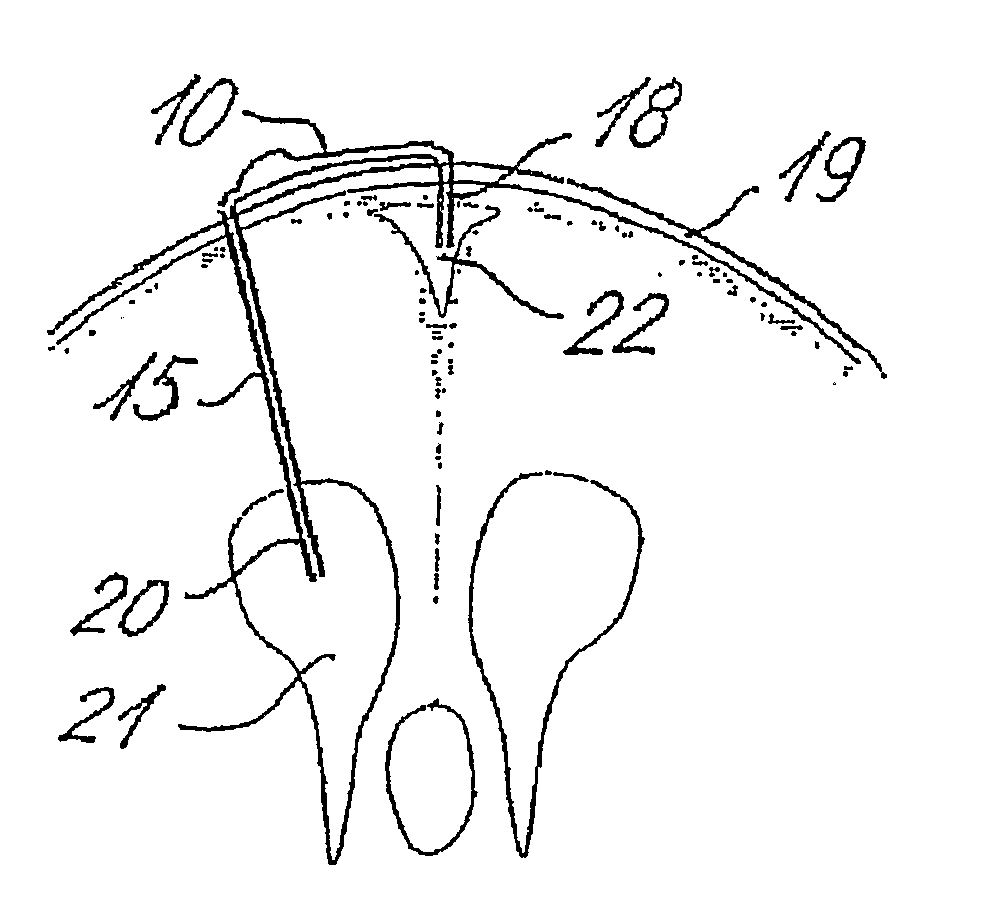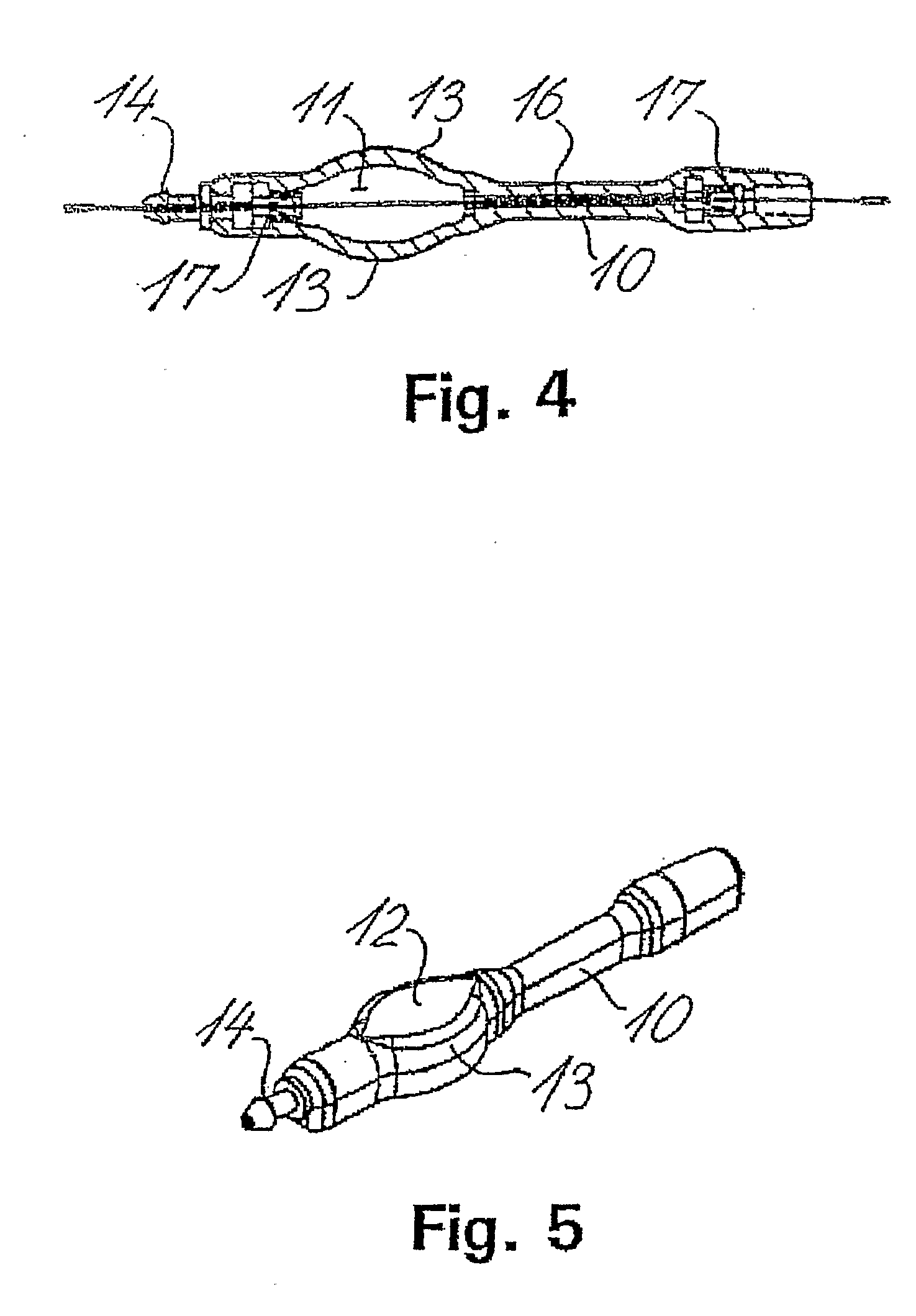Shunt system with coating and flow restricting component exerting a passive and essentially constant resistance to outflow
a technology of cerebrospinal fluid and shunt system, which is applied in the field of improved cerebrospinal fluid shunt system, can solve the problems of increased development of loculated csf compartments, death after shunt infection, and siphoning from the ventricle to unphysiological resorption sites, so as to reduce the number of shunt infections, reduce the risk of shunt infection, and encourage coagulation and (possibly fatal) blood clotting
- Summary
- Abstract
- Description
- Claims
- Application Information
AI Technical Summary
Benefits of technology
Problems solved by technology
Method used
Image
Examples
Embodiment Construction
[0065] The shunt system provided in the present invention comprises a shunt body allowing fluid communication between a brain ventricle and a part of the sinus system of the individual. Said shunt body comprises a flow restricting component capable of maintaining a passive and essentially constant resistance to flow of cerebrospinal fluids through the shunt body. Preferably, said essentially constant resistance to flow of cerebrospinal fluids through the flow restricting component is of a constant value of less than 8 mm Hg / ml / min.
[0066] Said shunt system also comprises a brain ventricle catheter capable of being connected to the shunt body at a first location thereof. The brain ventricle catheter is capable of draining cerebrospinal fluids from a brain ventricle to the shunt body.
[0067] Said shunt system also comprises a sinus catheter capable of being connected to the shunt body at a second location thereof. Said sinus catheter is capable of draining to the sinus system of the i...
PUM
| Property | Measurement | Unit |
|---|---|---|
| internal radius | aaaaa | aaaaa |
| internal radius | aaaaa | aaaaa |
| internal diameter | aaaaa | aaaaa |
Abstract
Description
Claims
Application Information
 Login to View More
Login to View More - R&D
- Intellectual Property
- Life Sciences
- Materials
- Tech Scout
- Unparalleled Data Quality
- Higher Quality Content
- 60% Fewer Hallucinations
Browse by: Latest US Patents, China's latest patents, Technical Efficacy Thesaurus, Application Domain, Technology Topic, Popular Technical Reports.
© 2025 PatSnap. All rights reserved.Legal|Privacy policy|Modern Slavery Act Transparency Statement|Sitemap|About US| Contact US: help@patsnap.com



